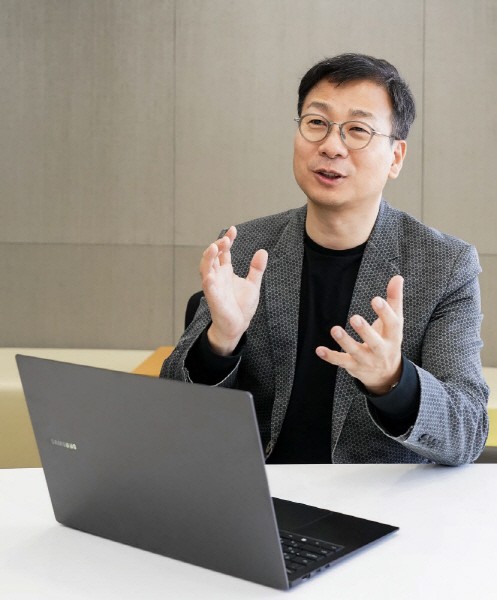
Intel fired up the market of external graphics processing unit (GPU). It will start with the GPU for laptops, and will expand their markets to desktop PC, and workstation. Since it is going to be used for the first time in Samsung Electronics, it is drawing a lot of attention between Intel and Samsung with their cooperation.
Intel released ‘Intel Arc 3’ on the 31st, which is external GPU for laptops. They are making the wining move in external GPU market, when Intel’s Arc previously only focused on internal GPU. In external GPU market, it is expected to have a battle with Nvidia and AMD, which are the strong players in the existing market.
Intel Arc 3 is based on highperformance graphics (HPG) micro-architecture, which significantly improves performance. It also has artificial intelligence (AI) inference technology, which provides 16 times more computing power than existing GPU vector devices. It boasts more than twice the gaming speed compared to the built-in GPU.
For the first time in the industry, hardware acceleration is supported with AV1 codec. This supports 50 times faster encoding speed compare to SW encoding. Intel uses Deep Link Technology to use internal GPU and external GPU together to maximize the performance. Depending on situation, it uses ‘Dynamic Power Share’, in order to increase power efficiency by separately supplying right amount power to central processing unit (CPU) and GPU.
Intel Arc 3 will be used for Samsung’s ultra-light laptop ‘Galaxy Book2 Pro’ It is the first laptop that uses Intel’s external GPU. Intel plans to supply Intel Arc 3 to laptop manufacturers such as Acer, Asus, Dell, HP and Lenovo. Intel Arc 5 and Arc 7with advanced performance will be released this summer. Arc series for desktop PC and workstations will also be released in order.

Intel's first usage of an external GPU "Arc" on Samsung Electronics' Galaxy Book2 Pro is the result of the collaboration between Intel and Samsung. Intel and Samsung have been working together for months to optimize Arc. Tae-won Bae, vice president of Intel Korea, who is in charge of Samsung business relation, emphasized that the cooperation system between Intel and Samsung is much stronger than it looks from the outside. Vice President Bae said, "In addition to the application of Samsung laptops using Arc series, 'the first in the industry' collaboration will be taking place different field. We will continue to take all-round cooperation with Samsung."
The Intel’svPro, platform hardware shield technology, was also applied to the Samsung Galaxy Book2 Pro. It is a technology to strengthen the security of business products. This is the first time that a consumer laptop has Intel hardware shield technology installed. Vice President Bae said, “Since Pat Gelsinger became CEO, Intel’s core strategy for laptop customers is platformization. In order to secure platformization of many semiconductor products and provide them to customers, we have to have continuous communication system with customers.” This means, including Samsung Electronics, they have to expand cooperation with their customers in order to gain results from platformization strategy.
Intel maintains a good relationship with Samsung in the cloud, network, and AI fields. Samsung robot vacuum cleaner, Bespoke Jet Bot AI, was equipped with an Intel AI engine and a video processing unit (VPU). Intel AI was also applied to Samsung's ultrasound medical devices. Vice President Bae added, "This is an example of maximizing synergy between Samsung's expert field and Intel's expert field."
Intel plans to accelerate collaboration with Samsung in all areas where they can deliver results. According to Intel's vision of 'Integrated DeviceManufacturer (IDM) 2.0', competition with Samsung Electronics in the foundry market is inevitable. However, vice president Bae thinks that driving this into a competitive view is a false perception of only seeing short stories. As Intel semiconductor has adopted a chiplet strategy that combines multiple semiconductors (die), they cannot rule out the possibility that Samsung Electronics' foundry will also actively utilize. Vice President Bae emphasized, "Intel's IDM 2.0 is one of the pillars of strengthening the cooperation system with external foundries. There are many parts where they can collaborate with Samsung DS.”
By Staff Reporter Dong-jun Kwon (djkwon@etnews.com)